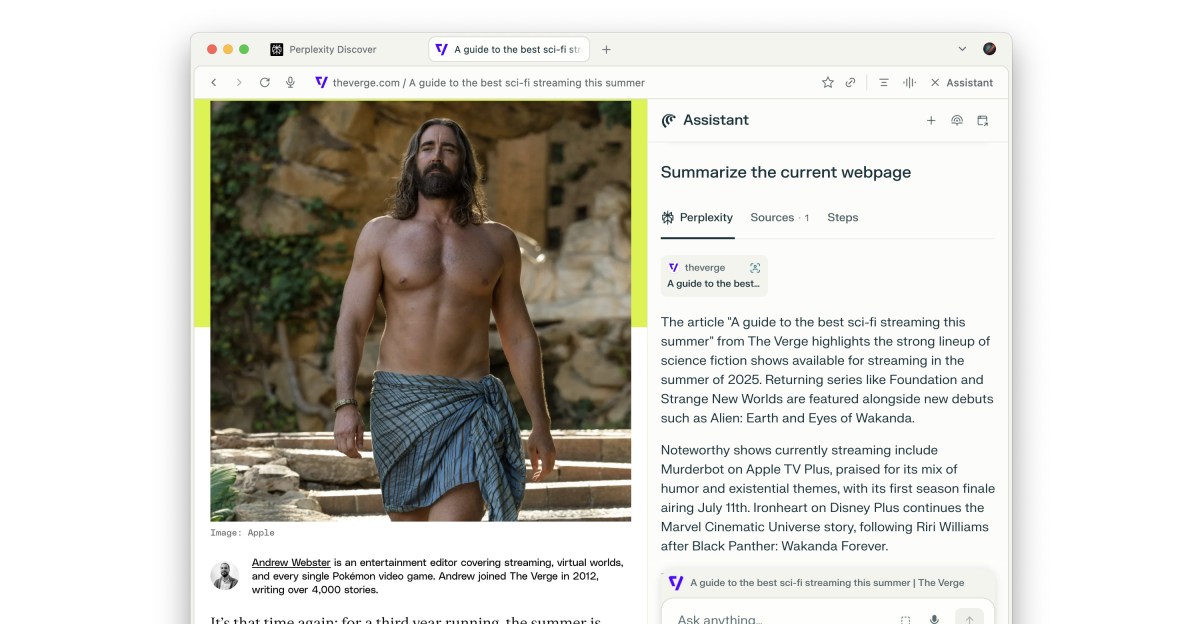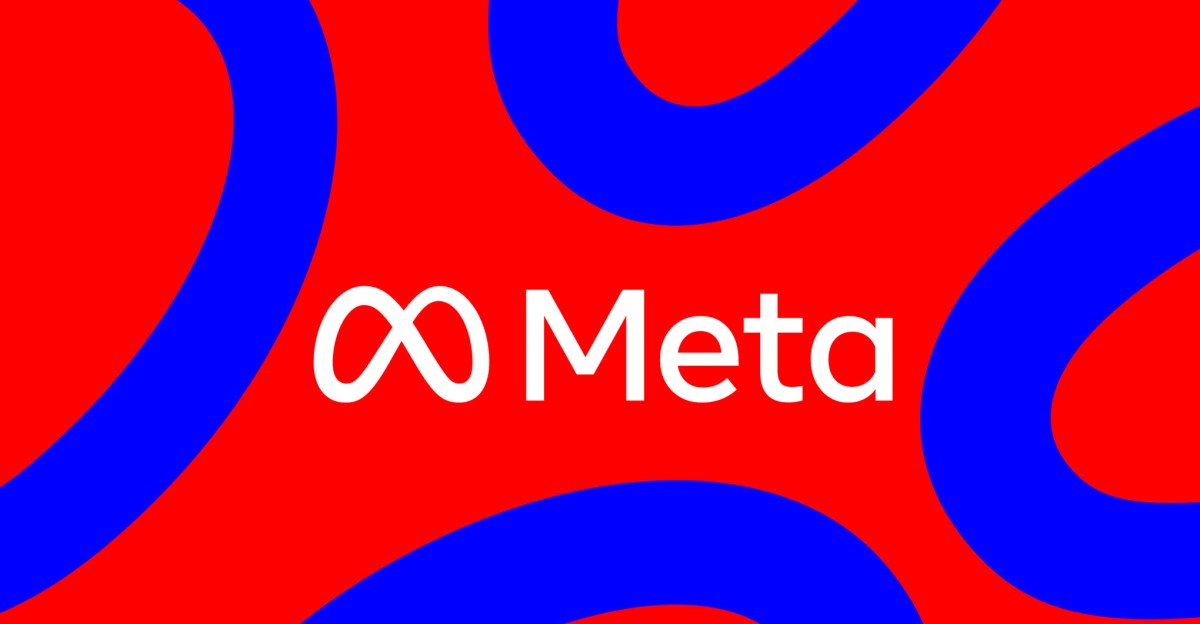Perplexity has just launched its agentic answer to Google Chrome — it’s called Comet, and it knocked out a slate of tasks on my behalf, though I think I could’ve done some faster myself. The new AI-powered browser is currently only available to Perplexity Max subscribers or through an early access waitlist, and it’s supposed to simplify the way you browse the web by infusing AI into practically everything you do.
Latest Tech News
Perplexity’s Comet is the AI browser Google wants

For one, it replaces Google Search results with its Perplexity AI “answer engine,” which appears in your browser window when you type a query into the address bar. Unlike your typical search engine, Perplexity will first surface links to relevant websites and then generate information about what you’re looking for. Comet’s distilled search results come in handy when you want it to narrow down your results for you, but it’s a bit jarring not to see the massive selection of websites suggested by Google.
Comet also comes with an AI assistant built in, similar to the Gemini integration that Google is testing in Chrome. Selecting the Assistant button in the top-right corner of the browser will open up a sidebar with a chat interface. From here, you can type in a query or use voice mode to chat about different topics, as well as ask specific questions about the webpage you’re on.
Comet can generate a summary of an article, describe an image, summarize YouTube videos, or perform more research about a topic that catches your eye. It’s also able to scan all of your open tabs to provide summaries of those pages and compare products on them.
At this point, these are all pretty standard features for an AI tool, but what makes Comet really stand out is its ability to complete tasks on your behalf. After linking my Google account to the browser, I found that it was frighteningly fast at generating — and sending — an email to myself containing a summary of this year’s hurricane season outlook. The browser also speedily complied with a request to close all the tabs I hadn’t opened in more than 15 minutes. It even wrote and published a post on my X account on my behalf about the upcoming Made by Google event.
I asked it to unsubscribe from the promotional emails sent by Fubo and Fanatics.com as well. I watched as Comet’s AI assistant walked itself through the process. In the chat interface, Comet shows what it’s “seeing” as it locates recent emails sent by the companies, finds the unsubscribe button, and then actually selects it.
I even had Comet go through my list of LinkedIn invites and accept requests from people with five or more mutual connections. The browser once again traced its own process of going through my invites, identifying which ones met my threshold for mutual connections, and then hitting Accept. But as I had Comet perform these tasks, I couldn’t help but think it’d be faster if I did them myself.
It took Comet two minutes to unsubscribe from receiving emails from those two providers, but it only took me a little over 30 seconds to unsubscribe from the same ones (yes, I timed myself). Comet also ate up a chunk of time when accepting a couple of LinkedIn invitations, a task I could do in just a couple of clicks. I can see it serving as a great accessibility tool, as well as a way to complete tasks in the background while you’re doing something else.
You can unlock even more agentic features when you start a prompt with “take control of my browser.” I didn’t realize this until I contacted Perplexity to ask when the browser would be capable of booking reservations or buying products. Without this phrase, Comet will stop short of completing these tasks and instead provide instructions on how you can do it manually.
To start, I asked Comet to “take control of my browser” and summarize the comments on a Verge article. Instead of denying my request because it couldn’t read the collapsed comments section (like Gemini in Chrome did), Comet worked around this and opened the comments section itself. It summed up the sentiment surrounding my colleague Vee’s cursed piece about Grok’s AI anime waifu, calling users’ reaction to the chatbot overwhelmingly “negative and critical.”
I took things a step further by asking Comet to take control of my browser, add aquarium sand and glue for an iPad repair to my cart on Amazon, and then check out. The process was surprisingly seamless, as I watched it acknowledge the total price, choose Prime’s one-day shipping speed, select my default payment option, and hit “order” without needing me to intervene.
I only ran into some hiccups when having Comet book me a reservation for a restaurant. When I finally found a restaurant that accepts online reservations, I once again asked the browser to take control and make a reservation for me on a specific date. It completed the task, only it never asked for my email or phone number, and instead entered a generic placeholder for both. I was able to have Comet rebook with my actual email address, but it shows that the browser might not get everything right all the time.
“Some of the more complicated agentic actions like shopping do have a higher failure rate than simpler tasks, but this is actually a limitation of current AI models,” Perplexity spokesperson Jesse Dwyer told The Verge. “So this will only get easier and better in Comet.”
Still, Comet can do far more than Chrome’s Gemini integration, and it’s exactly the type of tool that Google has set its sights on creating. Perplexity CEO Aravind Srinivas has made it clear that the startup wants to challenge Google’s dominance, and Comet may play a big role in bringing it up to speed.
Latest Tech News
Meta is playing the AI game with house money

Mark Zuckerberg’s AI hiring spree is costing a lot of money. His investors don’t care.
Meta’s stock price shot up over 10 percent on Wednesday after the company reported better-than-expected earnings. Revenue generated in the second quarter was $47.5 billion, up 22 percent from a year ago. Daily users across Facebook, Instagram, Threads, and WhatsApp grew to almost 3.5 billion. Meta also warned Wall Street that it would spend more on data centers and hiring next year. In response to all this, the company’s valuation increased by over $175 billion, or more than 12 Scale AI deals.
”Our business continues to perform very well, which enables us to invest heavily in our AI efforts,” Zuckerberg said during today’s earnings call. Meta’s cash cannon is now fully pointed at his new moonshot of achieving superintelligence, or as he puts it, AI that “surpasses human intelligence in every way.” He bragged about providing the richly compensated members of his new superintelligence lab “access to unparalleled compute” for training new models that will “push the next frontier in a year or so.”
Zuckerberg’s last moonshot was the metaverse, which came up only once at the very end of today’s earnings call. It’s too early to compare the two projects, but they share a key similarity: they need the kind of funding that only a company like Meta can provide.
Where AI differs from the metaverse, however, is that it appears to be already improving Meta’s ads business. A new AI model for delivering ads has driven approximately five percent more conversions on Facebook and three percent more conversions on Instagram, according to CFO Susan Li. Large language models are also starting to power how posts are ranked in feeds across the company’s apps, including Threads.
While Meta is still spending heavily on the metaverse (it’s on track to spend a total of $100 billion on its Reality Labs division this year), there’s no mistaking the fact that AI is officially Zuckerberg’s top priority. This time, though, he’s playing catch-up in a heated race, not trying to invent a new platform from scratch. The stakes are much higher, even if he’s playing the game with house money.
Latest Tech News
YouTube tells creators they can drop more F-bombs

YouTube videos with strong profanity in the first seven seconds (words like “fuck”) are now eligible for full monetization, according to a video from Conor Kavanagh, YouTube’s head of monetization policy experience. Previously, these kinds of videos were only eligible for “limited ad revenue.”
Changes to YouTube’s inappropriate language policies have long been a sore spot for creators. In November 2022, the company began to potentially limit ad revenue if profanity was used in the first 8–15 seconds of a video. ProZD, whose real name is SungWon Cho, published a video where, after waiting 15 seconds, he called the policy change “the dumbest fucking shit I’ve ever heard.” (He later said that the video was demonetized.) YouTube adjusted its policies in March 2023, including allowing videos with profanity in the first 8–15 seconds to be eligible for ad revenue.
I asked ProZD his thoughts about Tuesday’s change. “It’s about fucking time.”
The company originally restricted monetization for videos with swearing at the start of videos to “align with broadcast standards,” Kavanagh says. “Advertisers expected ads on YouTube to have distance between profanity and the ad that just served.” However, “those expectations have changed,” he says, “and advertisers already have the ability to target content to their desired level of profanity.”
While the only specific example of “strong” profanity Kavanagh provides is “fuck” — he says that YouTube defines “moderate profanity” as words like “asshole” or “bitch” — “you get the idea,” he says.
YouTube will continue to limit monetization if you use moderate or strong profanity in titles or thumbnails. Videos with a “high frequency” of strong profanity are also still a “violation” of YouTube’s advertiser-friendly content guidelines, Kavanagh says. “You have to pick and choose your fucks carefully.”
Latest Tech News
The controversial legal tactic The Trump Organization is using to take down fake merch

Unauthorized merch promoting Donald Trump — from hats and mugs to signs and T-shirts — is everywhere online. Go to a Trump rally or other MAGA political event and you’re bound to find people hawking their DIY Trump wares.
The Trump Organization apparently isn’t too pleased.
A lawsuit filed last week claims online sellers on platforms like eBay, Amazon, and Walmart are hawking goods that infringe on the Trump Organization’s trademarks.
“Defendants design the online marketplace accounts to appear to be selling genuine TRUMP Products while selling inferior imitations of such products,” the suit, filed in US District Court in Florida, reads.
But The Trump Organization’s lawsuit isn’t your run-of-the-mill trademark case — look at the filing and you won’t find a list of sellers the firm is going after. Instead, there’s a vague stand-in for the defendants: “The individuals, corporations, limited liability companies … identified on Schedule A.”
These lawsuits are a way to go after dozens, hundreds, or even upwards of a thousand online storefronts all at once, making it much cheaper for plaintiffs. Schedule A suits are regularly filed under seal, meaning there isn’t the same level of public transparency. At times, plaintiffs have been able to get extraordinary remedies in court, like getting defendants’ assets frozen — including in a case I wrote about where an Amazon seller was unable to withdraw $50,000 in earnings.
These types of lawsuits get their name from the separate “Schedule A” form that’s filed to court — often under seal — listing all the online storefronts being sued. While it’s true that the web is filled with knockoffs, some experts have argued that Schedule A suits at times go overboard and raise due process concerns for the entities being accused of selling infringing products.
I’m not a judge or a trademark expert, so I will make no judgment on the merits of The Trump Organization’s claims. But it’s fascinating to see the president’s private business take up the same legal tactic that’s used by brands like Nike. Fake (or, to be more precise, unauthorized) Trump merch feels part and parcel with the MAGA ecosystem, whether it’s a homemade Trump yard sign or bloody post-assassination attempt pictures being plastered on T-shirts for sale on Etsy.

 Fintech1 week ago
Fintech1 week agoOpenAI and UK Government Partner on AI Infrastructure and Deployment

 Latest Tech News2 weeks ago
Latest Tech News2 weeks agoThe tech that the US Post Office gave us

 Cyber Security1 week ago
Cyber Security1 week agoMicrosoft Fix Targets Attacks on SharePoint Zero-Day – Krebs on Security

 Latest Tech News1 week ago
Latest Tech News1 week agoTrump wanted to break up Nvidia — but then its CEO won him over

 Artificial Intelligence2 weeks ago
Artificial Intelligence2 weeks agoApple loses key AI leader to Meta

 Latest Tech News5 days ago
Latest Tech News5 days agoGPD’s monster Strix Halo handheld requires a battery ‘backpack’ or a 180W charger

 Cyber Security6 days ago
Cyber Security6 days agoPhishers Target Aviation Execs to Scam Customers – Krebs on Security

 Artificial Intelligence1 week ago
Artificial Intelligence1 week agoWhy Apple is playing it slow with AI




















